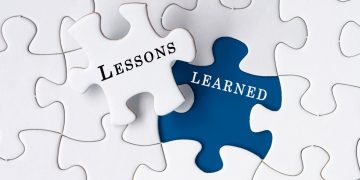Dr. Conklin, who inspired the five principles of Human & Organizational Performance (HOP), emphasizes that learning is the most powerful tool a safety professional can use. This HOP principle underscores the importance of learning as a key component in building system reliability.
The goal, Dr. Conklin explains, is to prevent operational upsets by understanding why events occur and applying lessons learned from past incidents. Additionally, he notes that by improving feedback loops within our organizations, we can enhance our capacity for learning.
5 Questions to cultivate a continuous learning mindset
- What am I genuinely curious about?
- What am I doing well, and where can I improve?
- How can I push beyond my comfort zone?
- What’s one new thing I can try today to expand my knowledge or skills?
- How do I track my progress and celebrate my achievements?
Learning thrives with consistency. Reflect on ways to embed learning into your everyday life!
5 ways to build a Culture of Learning
The following five strategies are effective for fostering a culture of learning. Here’s a closer look, along with some suggestions to deepen their impact:
1. Personalize the learning experience: Leveraging diverse platforms is great for customization. Additionally, consider offering personalized learning paths based on employees’ skill gaps and goals using AI-driven recommendations.
2. Make learning a habit: Accessibility is key, as is embedding learning into daily routines. A suggestion here is to incentivize continuous learning with “microlearning moments” or mini-tasks that employees can complete during short breaks.
3. Socialize learning: Building cohorts and mentorships enhances peer-to-peer learning. Adding internal communities or forums (e.g., Slack channels) for sharing resources, Q&A, and celebrating progress can deepen this social element.
4. Create learner-driven experiences: The alignment of learning with personal and organizational goals is spot on. Consider incorporating periodic check-ins to ensure alignment, flexibility to adjust learning paths, and options for employees to suggest learning content or areas of focus.
5. Measure progress: Data-driven assessments provide clear insights into the effectiveness of learning programs. Along with measuring skills gaps, track employee satisfaction with learning content and analyze how learning impacts job performance to adapt strategies effectively.


































































